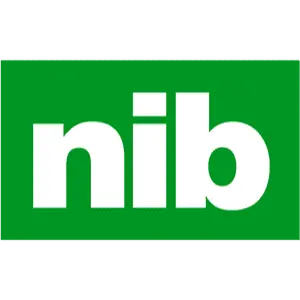
Invisalign & Health Insurance: What You Need To Know
(5 Minute Read)
Thinking of getting Invisalign for a straighter smile? You need to know how dental insurance can help with the cost. Invisalign is a discreet and convenient alternative to traditional braces but it comes with a big price tag. This post explains how Invisalign works, the costs involved and how dental insurance can help pay for part of it. With the right info you can make an informed decision about your dental care and financial planning.
We’ll explain how Invisalign works, what sort of cost you can be looking at for Invisalign treatment, as well as important information around how it all works with private health insurance. Plus, we’ll highlight why it’s essential to compare health insurance options to maximise your potential claim and minimise out-of-pocket expenses.
What is Invisalign?
Firstly, Invisalign is not actually a dental procedure but is, in fact, a company. Invisalign has become synonymous with clear aligners because they are by far the biggest player in the clear aligner industry (like saying Google instead of saying search engine or Hoover instead of vacuum cleaner).
Invisalign is a convenient alternative to traditional braces. They are clear aligners that fit over your teeth, which over time will straighten your teeth, leaving you with that smile you always wanted. They are brilliant for people who want to have their teeth re-aligned but don’t want the metal train track look from braces. Unlike traditional braces, you can also take them off whenever you want!
How does Invisalign work?
The Invisalign process all starts off in the dentist chair. Your dental practitioner will take a physical impression or a digital scan of your teeth. This scan will be used to help create a digital 3D impression of your mouth, which will be used to create an individual treatment plan for you. Once you’re happy with the plan, your 3D impressions will be sent across to Invisalign to begin the process of making your aligners!
The number of aligners you need will be dependant on the length of your treatment plan. The length of your treatment plan will vary on the amount of work you need doing. Invisalign themselves say that the average length is around 12 months – 18 months for an adult, but again it really is dependant on your individual work, so don’t be alarmed if your treatment plan is up to 2 years.
Once you have your aligners, you’ll need to wear them for around 22 hours a day to receive maximum benefit. You should take them out only to eat, drink & brush your teeth. You will also need to replace your aligners every 2 weeks. When you leave your orthodontists, you’ll be given a series of aligners to wear, it is the gradual replacement of these aligners that slowly alter the arrangement of your teeth. It is recommended that you visit your orthodontist every 6 -8 weeks, to make sure your Invisalign treatment is working correctly.
Invisalign Cost
The cost of Invisalign treatment will be dependant on a few different factors such as:
- How long your treatment plan lasts?
- How many aligners do you need?
- Do you need to have mid-treatment adjustments?
Australian Dentists Clinic estimate the average cost of Invisalign to be anywhere from $3,500 – $7,000. Some dental practices even put the estimates up as high as between $4,500 – $9,000. What is certain though, is that Invisalign is not cheap by any stretch. This is why most people have private health insurance to help them pay for a portion.
Invisalign & Private Health Insurance
You can claim a benefit on Invisalign through your private health insurance. Invisalign is orthodontic work, and as such, any claims you make for Invisalign will come off your orthodontic limit.
If don’t currently have coverage for orthodontics on your current extras plan, or you don’t have an extras policy at all, then you’ll need to wait 12 months before you’ll be eligible to make a claim for your Invisalign treatment. So, if its something you’re considering getting & you currently have no cover, it might be worth investing in an extras policy.
If you do have private health insurance which covers orthodontics, you should shop around and see which health fund will give you the best rebate for your price range. If you switch over to another policy that covers orthodontics, you will not need to re-serve your wait period.
Be aware though, if you switch to a plan which increases your orthodontic limit, you will need to wait 12 months before you can claim any of the additional benefit. For example, if you currently have an orthodontic limit of $1,000 and you switch to a plan with $1,500 for orthodontic treatment, you will gain access to the $1,000 straight away, but you will wait 12 months before you can claim the extra $500.
Listed below are some health funds which will cover you for Invisalign. We’ve also listed the individual policy names and important fund information you’ll need to be aware of if you decide to switch.
HIF Invisalign
HIF can offer fantastic limits on orthodontic & Invisalign treatment. However, they have a few fund rules which are different to the majority of other health funds, which you need to be aware of. Firstly, to quote HIF’s policy booklet “Orthodontic benefits are not payable by HIF if the treatment or service has commenced prior to joining HIF”. This means if you have already started orthodontic treatment, HIF will not pay out a single dollar on orthodontic treatment if you switch to them.
Secondly, your orthodontic lifetime limit will depend on how long you have been with HIF when you make your first claim. HIF’s orthodontic lifetime limits increase each year you stay on the plan, however, the year you claim is the year that your lifetime limit will come into effect. So for example, if you had Super Options for 3 years and you made an orthodontic claim, your orthodontic lifetime limit would be $1,700 (see table below).
nib Invisalign
If you want to claim a benefit on Invisalign through nib, you currently have two policy options; Top Extras & the Family Extras bolt on.
With Top Extras, the yearly limit starts at $800 per year, however, it does increase by $100 each year you remain on the policy until you reach $2,600. For example, if you switched to Top Extras, but you didn’t claim on Invisalign for 2 years, nib would actually pay $1,000 yearly instead of $800 yearly. This policy can be good if you have young children who won’t be claiming on orthodontic treatment for a number of years.
Family Extras is a bolt-on package with nib. Family Extras cannot be purchased as a stand-alone product. This means you must at least also purchase either Core Extras or Core Extras plus, alongside Family Extras.
ahm Invisalign
ahm currently have 3 stand-alone extras policies which will cover a benefit for Invisalign; Lifestyle Extras, Family Extras, and Super Extras. The two things you need to know about ahm policies in relation to orthodontic/Invisalign claims are; ahm are a financial year fund & that your yearly limit increases with loyalty.
ahm run on a financial year, unlike most other health funds. This means that all your yearly limits re-set on July 1, as opposed to January 1 like most other health funds, for example, Bupa, Medibank, HIF, HCF etc. With this in mind, it means that you could claim for your upper teeth in June & your lower teeth in July, granting you the highest amount of claims in the shortest amount of time.
Like HIF, ahm will also reward you for your loyalty, by increasing your yearly limits on orthodontic treatment over time. The table below will show you how much they increase by.
HCF Invisalign
HCF currently have 2 extras policies which will cover you for Invisalign; Gold Extras and Platinum Extras. Unlike the previous health funds discussed in this article, there are no loyalty benefits over time with HCF when it comes to orthodontics.
Something you need to be aware of though, is that HCF will limit your claims if you get your orthodontic work done by a dentist and not an orthodontist. So if you do decide to switch with HCF, double check with the dental practice & HCF customer service team, that you’ll be able to claim your entire yearly limit, and not 50% of it.
Still need more info?
If you still need more information regarding Invisalign and private health insurance, speak to a Health Deal health cover consultant & they’ll be able to run you through all your different options and assess which health insurance policy is right for you.

CPAP Machines and Sleep Apnea Treatment: Insurance Coverage Guide
If you’ve been diagnosed with sleep apnea, chances are you’ve heard about CPAP machines. CPAP stands for Continuous Positive Airway Pressure, and it’s one of

Private vs. Public Healthcare for Australian Seniors: Making the Right Choice
As you get older, staying healthy matters more than ever. Whether it’s a knee replacement, cataract surgery or managing something ongoing, getting the right care

Dental Implants and Health Insurance: What’s Covered for Seniors
Missing teeth can make everyday life harder than it needs to be. Eating, speaking, and even smiling confidently can become a challenge, especially as we

Health-flation: How Rising Health Insurance Costs Affect Seniors
Have you noticed your health insurance premiums creeping up year after year? It’s part of a growing trend often referred to as “health-flation”: the steady

Knee Replacement Surgery: How Private Health Insurance Can Help
Knee replacement surgery is one of the most common types of joint replacement surgery in Australia, especially for older adults managing osteoarthritis or long-term joint

Gold Health Insurance for Seniors: Is It Worth the Premium?
As we get older, our health needs tend to become more complex. Whether it’s managing chronic conditions, preparing for surgery, or simply wanting peace of






 Single
Single Couple
Couple Family
Family Single Parent
Single Parent